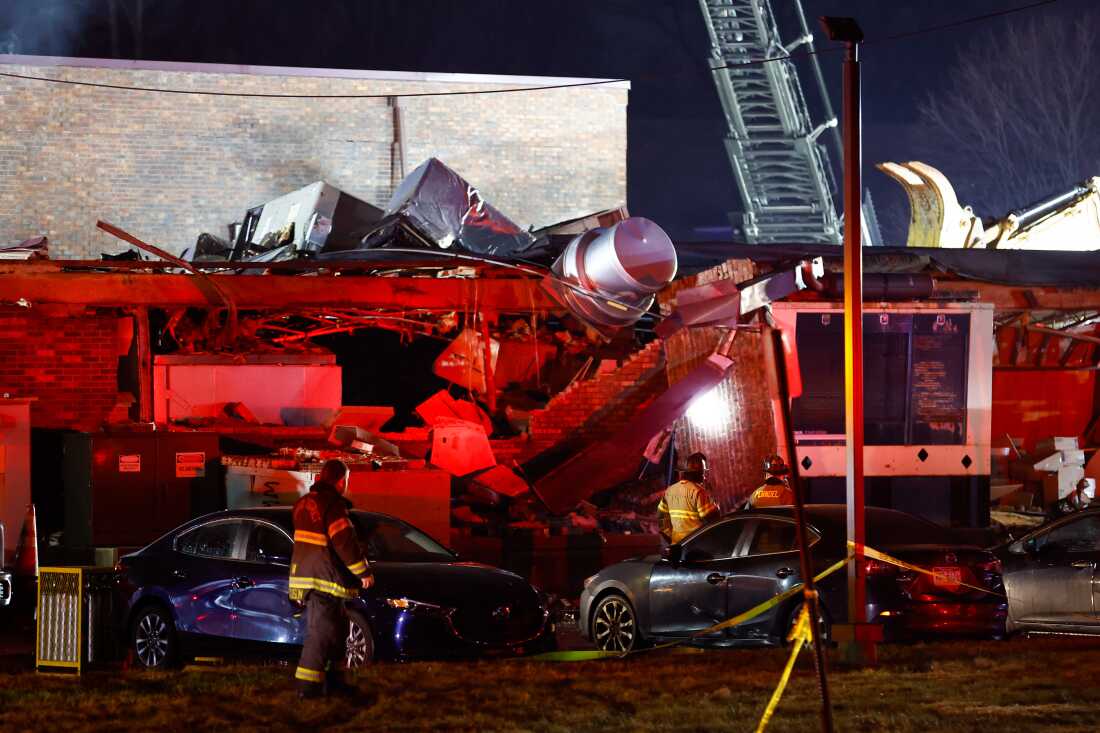Sir Keir Starmer has entered Downing Street as Britain’s new prime minister after winning a historic Labour majority of more than 170 seats, declaring: “Our country has voted decisively for change.”
Starmer travelled to Buckingham Palace at midday on Friday and was invited by King Charles to form a government, putting him at the head of the first Labour administration since 2010.
Addressing flag-waving supporters outside Number 10, Starmer said he wanted to rebuild trust between the public and politicians. “This wound, this lack of trust, can only be healed by actions not words,” he said.
“My government will fight every day until you believe again,” the new prime minister added, promising to run a government that would “tread more lightly on your lives”.
But he cautioned: “This will take a while, but have no doubt that the work of change begins immediately.”
Labour’s massive victory at Westminster saw the centre-left party win 411 seats so far, largely at the expense of Rishi Sunak’s Conservatives, who collapsed to the worst defeat in the party’s history.
Nigel Farage’s Reform UK swallowed up Tory votes, leaving the Conservatives with just 121 seats. Labour was able to win its majority with only 34 per cent of the vote, the lowest-ever winning share.
On Friday afternoon, Starmer named Angela Rayner as deputy prime minister and secretary of state for levelling up, housing and communities.
Rachel Reeves was appointed chancellor of the exchequer, becoming the first woman in 800 years to hold the ancient post. David Lammy was made foreign secretary and Yvette Cooper home secretary.
Speaking from Downing Street earlier on Friday, Sunak announced his resignation as prime minister, adding that he would quit as Tory leader once procedures for choosing his successor were in place.
Sunak said: “To the country, I would like to say first and foremost, I am sorry. I have given this job my all, but you have sent a clear signal that the government of the United Kingdom must change.”
“I have heard your anger and disappointment and I take responsibility for this loss.” In his short resignation speech, he described Starmer as a “decent, public-spirited man who I respect”.
It was a historic Labour victory — the party last won an election in 2005 under Sir Tony Blair — but Starmer will become Britain’s new prime minister knowing that Labour’s public support is shallow.
The party was set to win power with about 34 per cent of the national vote, only 10 points higher than the Conservatives on 24 per cent. Before the election, polls put Labour 20 points ahead. Former leftwing Labour leader Jeremy Corbyn won 40 per cent of the vote in his 2017 election defeat.
But Labour’s performance is a triumph for Starmer, a former chief prosecutor who became his party’s leader in 2020 after its worst postwar election defeat. His victory is similar in scale to Blair’s 1997 Labour landslide.
Starmer’s avowedly pro-business agenda appears to have paid off, with housebuilding companies leading a UK stock market rally on Friday. Labour has pledged to build 1.5mn homes over the next five years.
On Friday afternoon, Barratt Developments, Taylor Wimpey, Persimmon and Vistry were all up more than 2 per cent. The FTSE 250 index of domestically focused mid-cap stocks rose 0.6 per cent.
Labour won scores of seats because of the rise of Reform UK, which split the rightwing vote, punishing the Conservatives under the UK’s first past the post electoral system.
One of the victims was former prime minister Liz Truss, among many big Tory names to lose their seats. Her 49-day premiership, and the economic havoc it spawned, contributed to the Conservative meltdown.
“This looks more like an election the Conservatives have lost than one Labour have won,” pollster Sir John Curtice told the BBC.
On Friday afternoon, Farage was heckled as he spoke following his election as an MP in Clacton at his eighth attempt. “Boring, boring, boring,” said the Reform leader as protesters accused him of bigotry.
The arch-Brexiter promised a fresh start for his populist party after it expelled several candidates facing racism allegations.
“We are going to professionalise the party,” he said. “We are going to democratise the party. And those few bad apples who have crept in will be gone.”
Turnout in the election was on course to be about 60 per cent, close to a record low, suggesting general public dissatisfaction with mainstream politics.
Starmer admitted that he faced an immediate task of reconnecting mainstream politics to voters. “The fight for trust is the battle that defines our age,” he said.
With almost all results in, Labour had secured 34 per cent of the vote, the Conservatives 24 per cent, Reform 14 per cent and the Liberal Democrats 12 per cent. Labour had won 411 seats, the Conservatives 121, the Lib Dems 71 and Reform four.
The centrist Lib Dems’ tally smashed the party’s modern-era 62-seat record in 2005, as it made big gains in the Tory “blue wall” of well-heeled seats in the south of England.
The Scottish National party was behind Labour in Scotland with an expected 10 seats, delivering a hammer blow to the party’s dream of securing independence.
Among the high-profile Conservative casualties on a night of Tory desolation were Grant Shapps, defence secretary; Penny Mordaunt, leader of the Commons; Gillian Keegan, education secretary; Sir Jacob Rees-Mogg, former cabinet minister; and Alex Chalk, justice secretary.
Corbyn held his Islington North seat, standing as an independent, while George Galloway, the leftwing pro-Palestinian MP for Rochdale, lost his seat to Labour.
But Labour lost four seats — including one held by shadow cabinet member Jonathan Ashworth — to pro-Palestinian independent candidates, an indication of how Starmer’s position on the Israel-Hamas war has hurt his party among many Muslim voters.
The Green party also won all its four target seats in the general election, quadrupling the number of MPs it will send to Westminster and bringing its total in line with Reform UK.
Labour’s victory bucked international political trends, with far-right parties performing strongly in recent European and French elections, and Donald Trump leading in polls for the US presidential race.
Starmer has become only the seventh Labour prime minister in the party’s history. He will immediately form his cabinet after moving into 10 Downing Street on Friday, with an instruction to ministers to quickly deliver policies to jolt Britain out of its low-growth torpor.
Chancellor-in-waiting Reeves has said she hopes investors will now see the UK as a “safe haven”.
The Conservatives’ total of 121 seats is lower than the party’s worst-ever result of 156 in 1906. Starmer’s expected seat haul is close to the 418 seats won by Blair in his 1997 landslide victory.











































